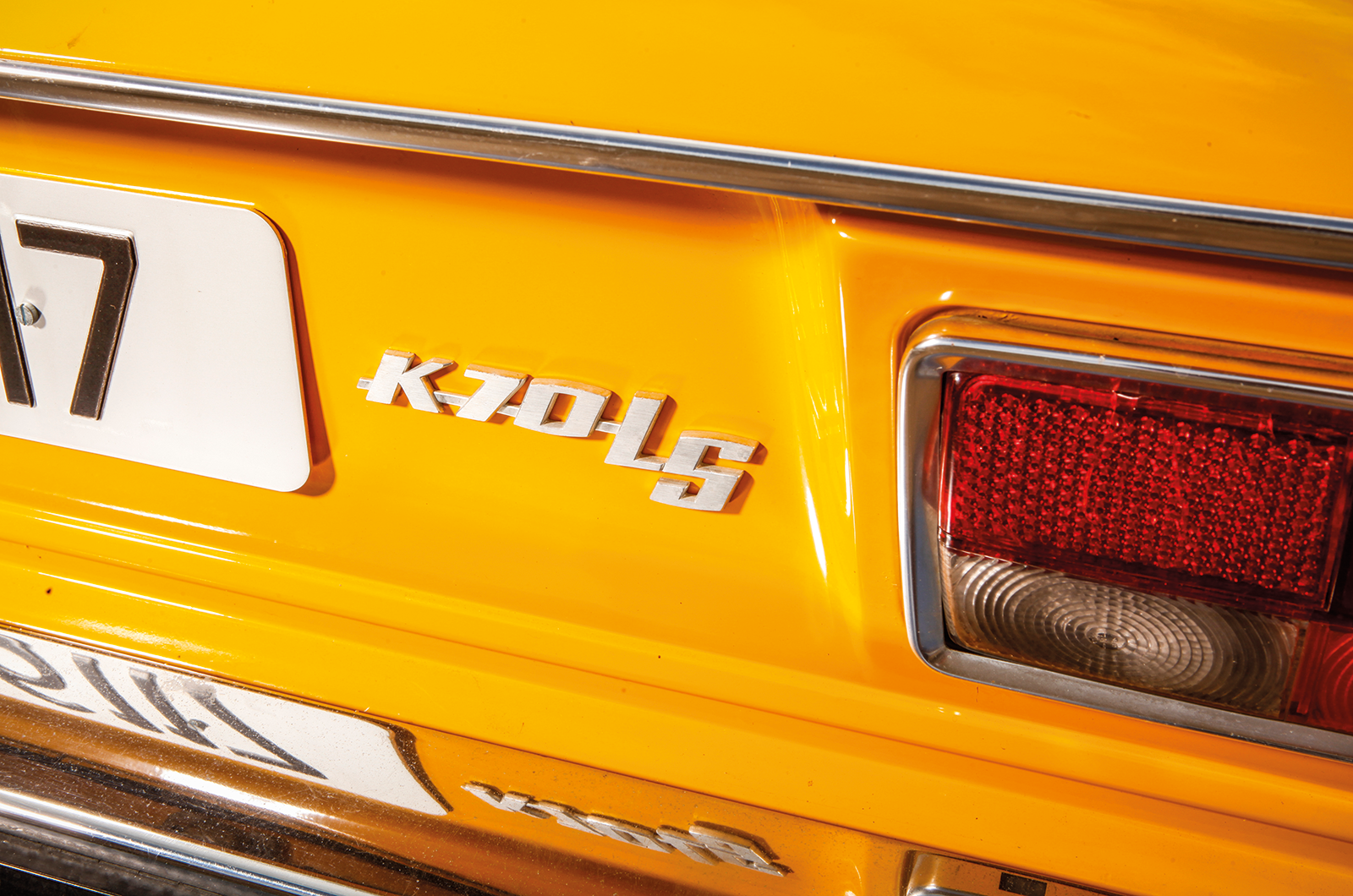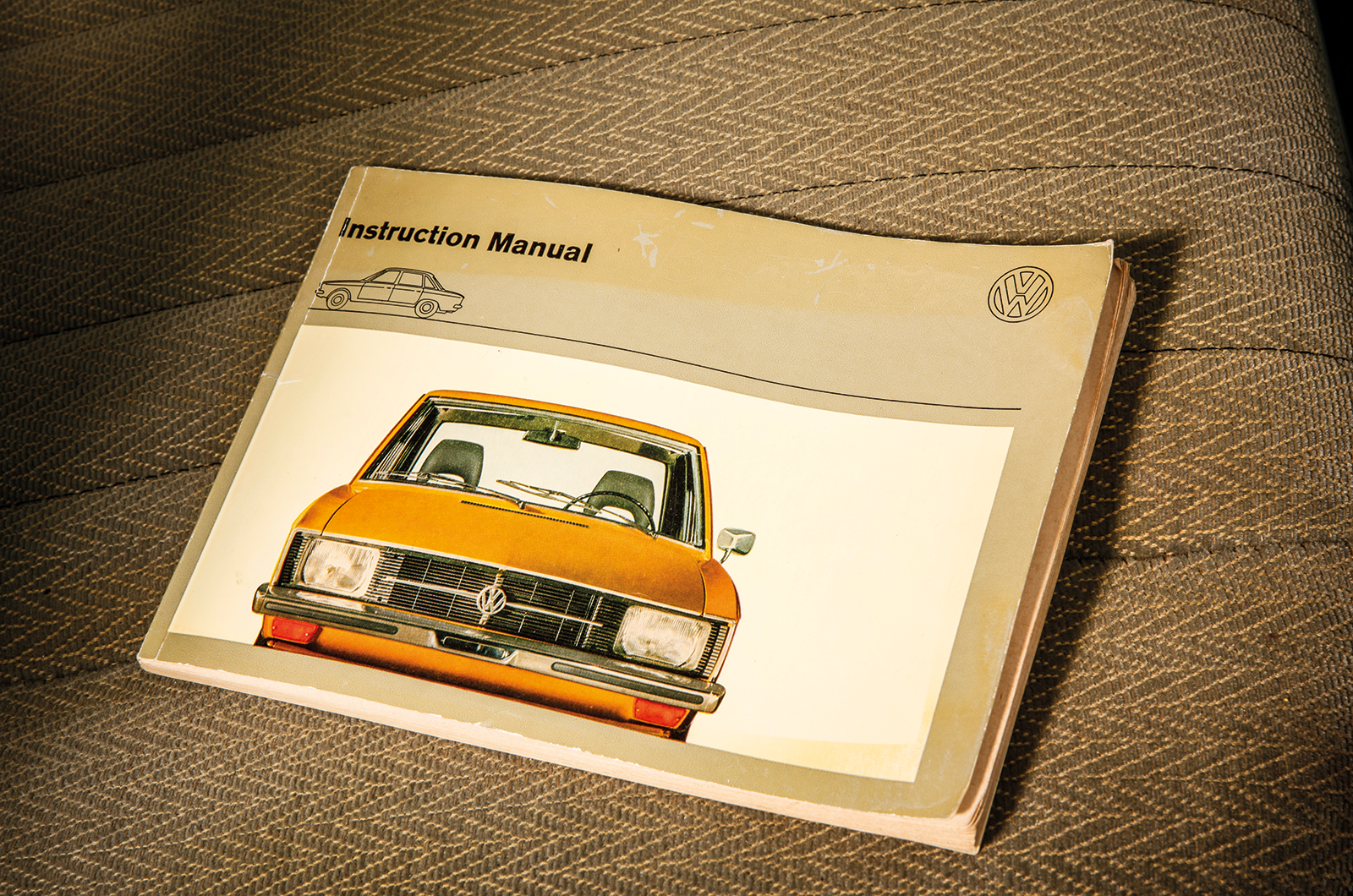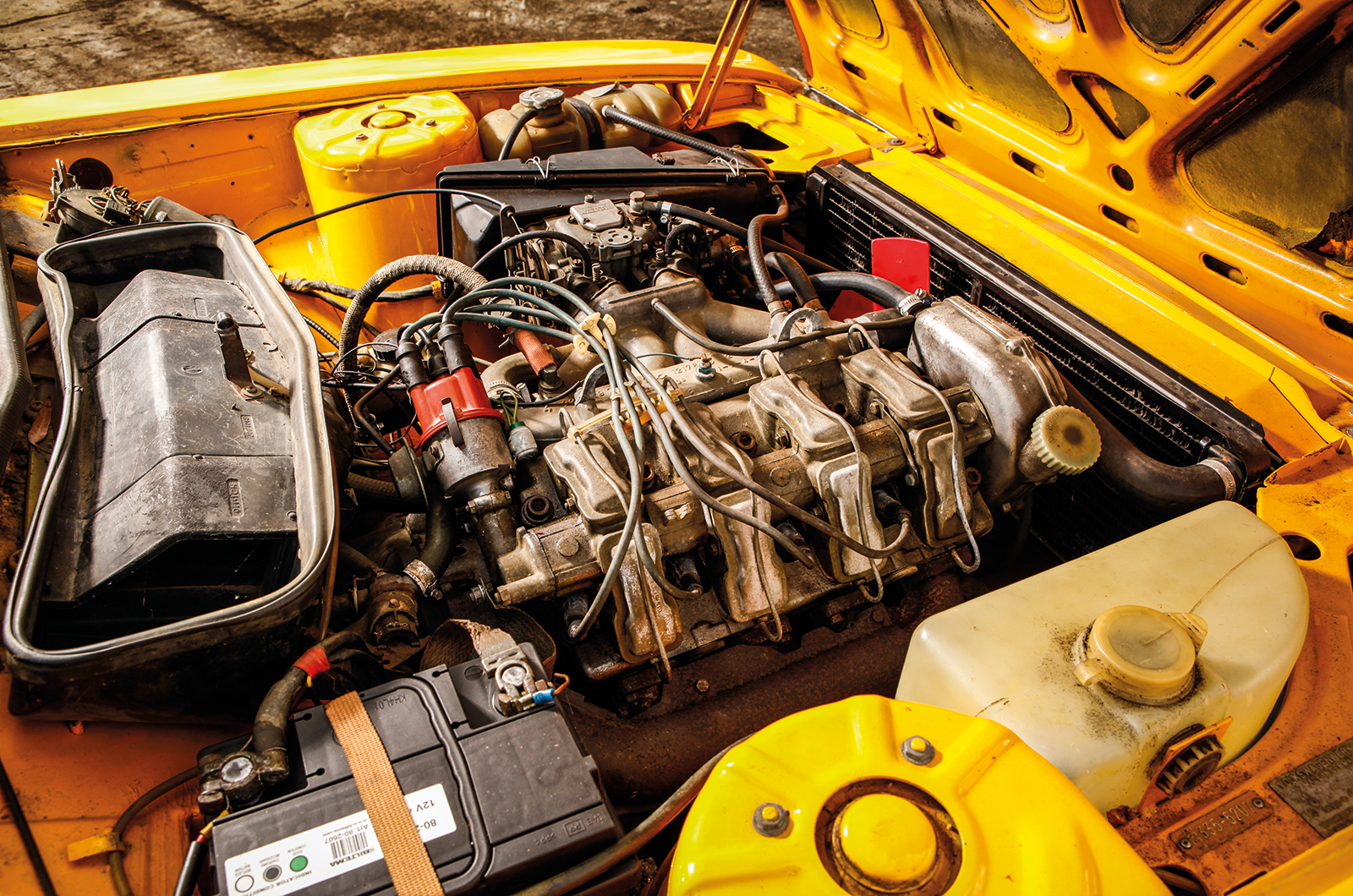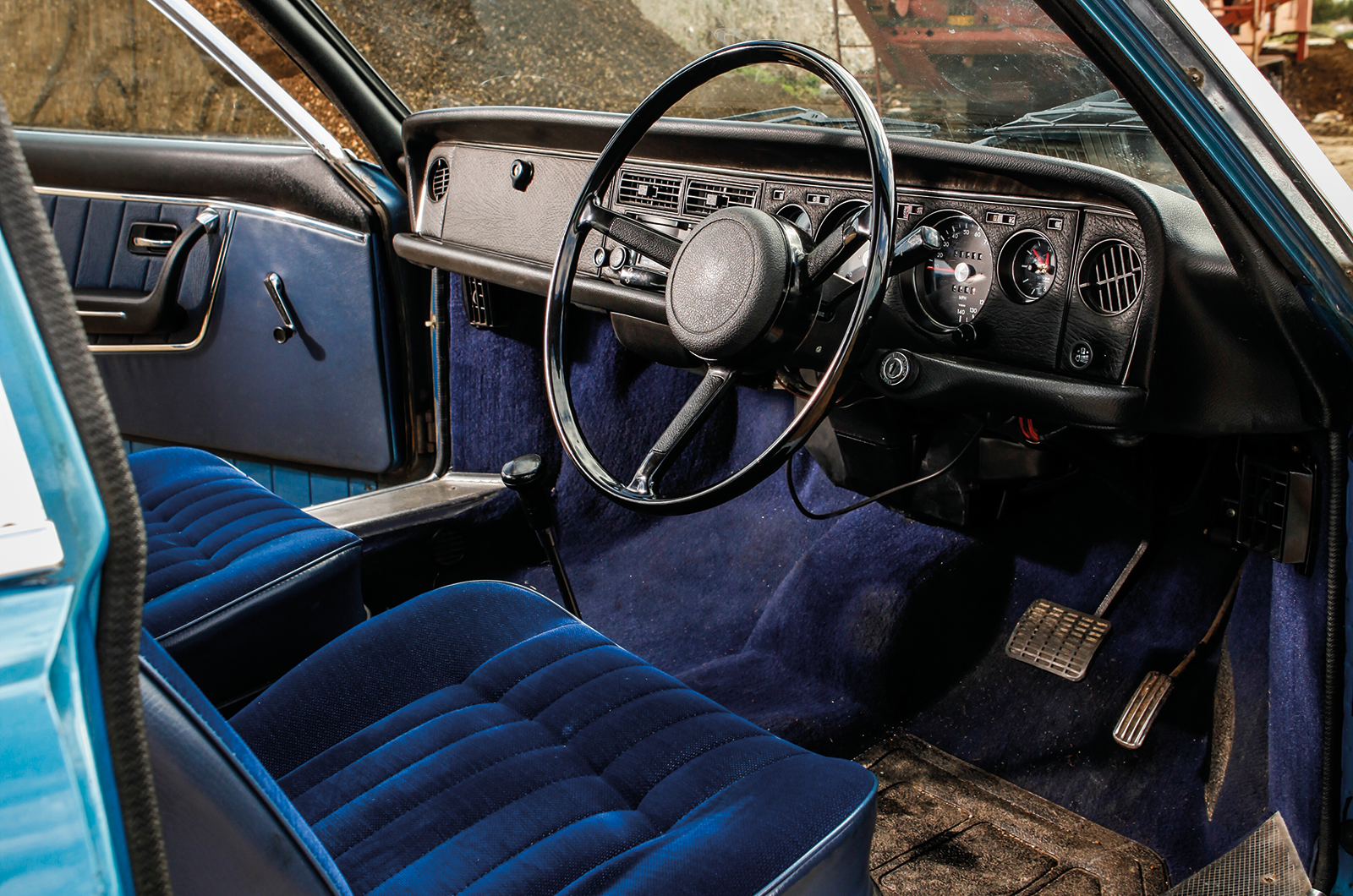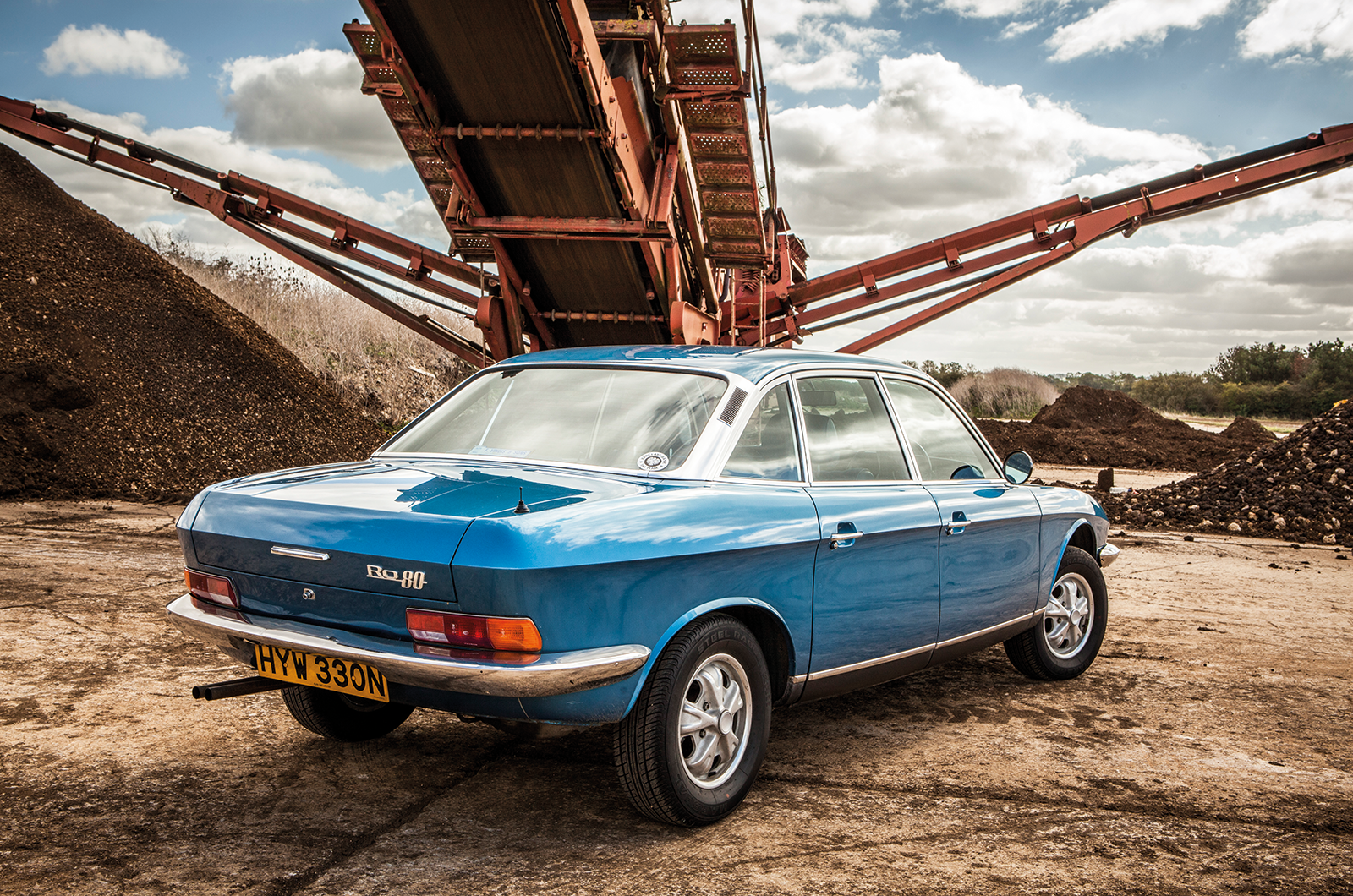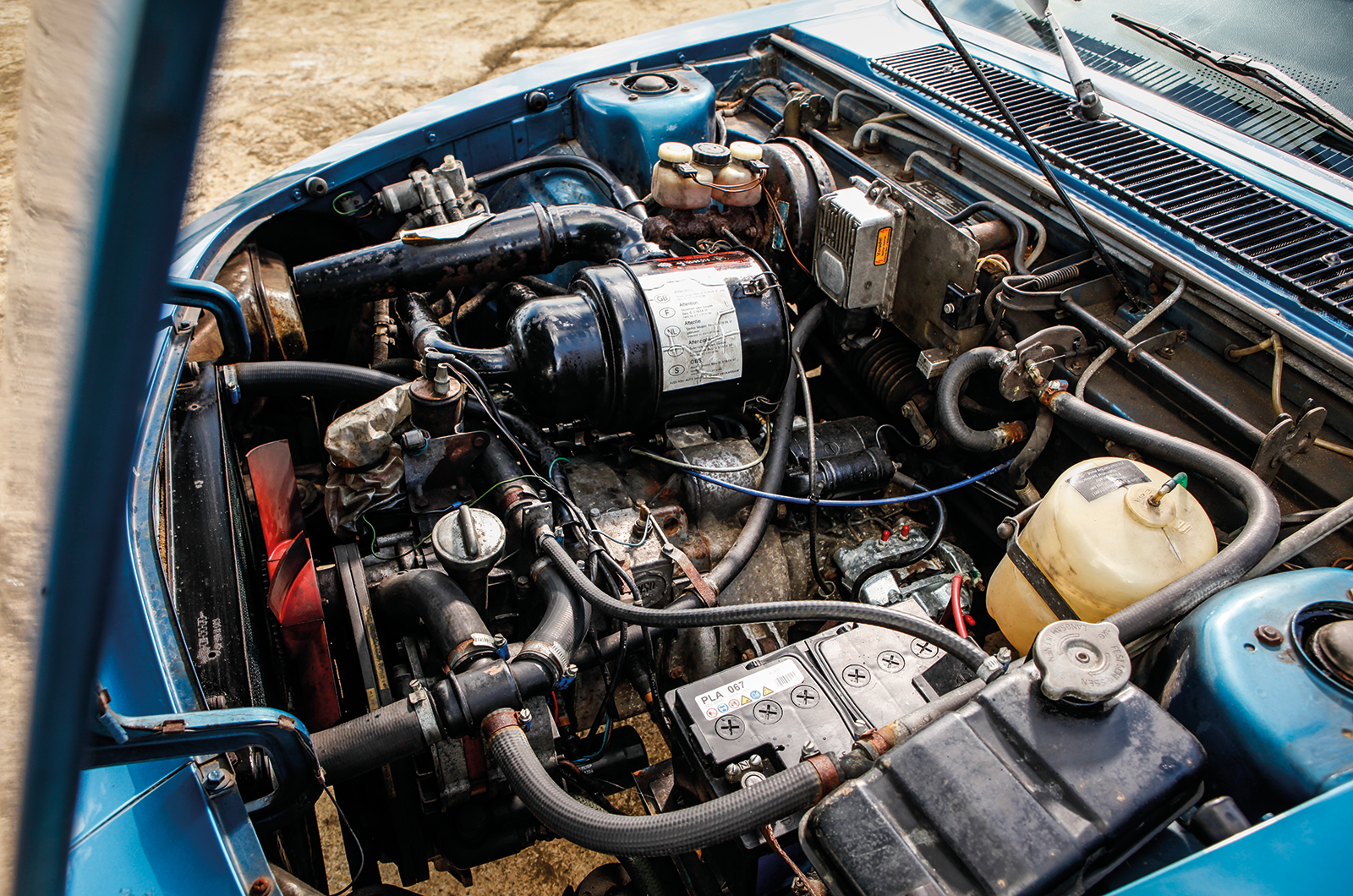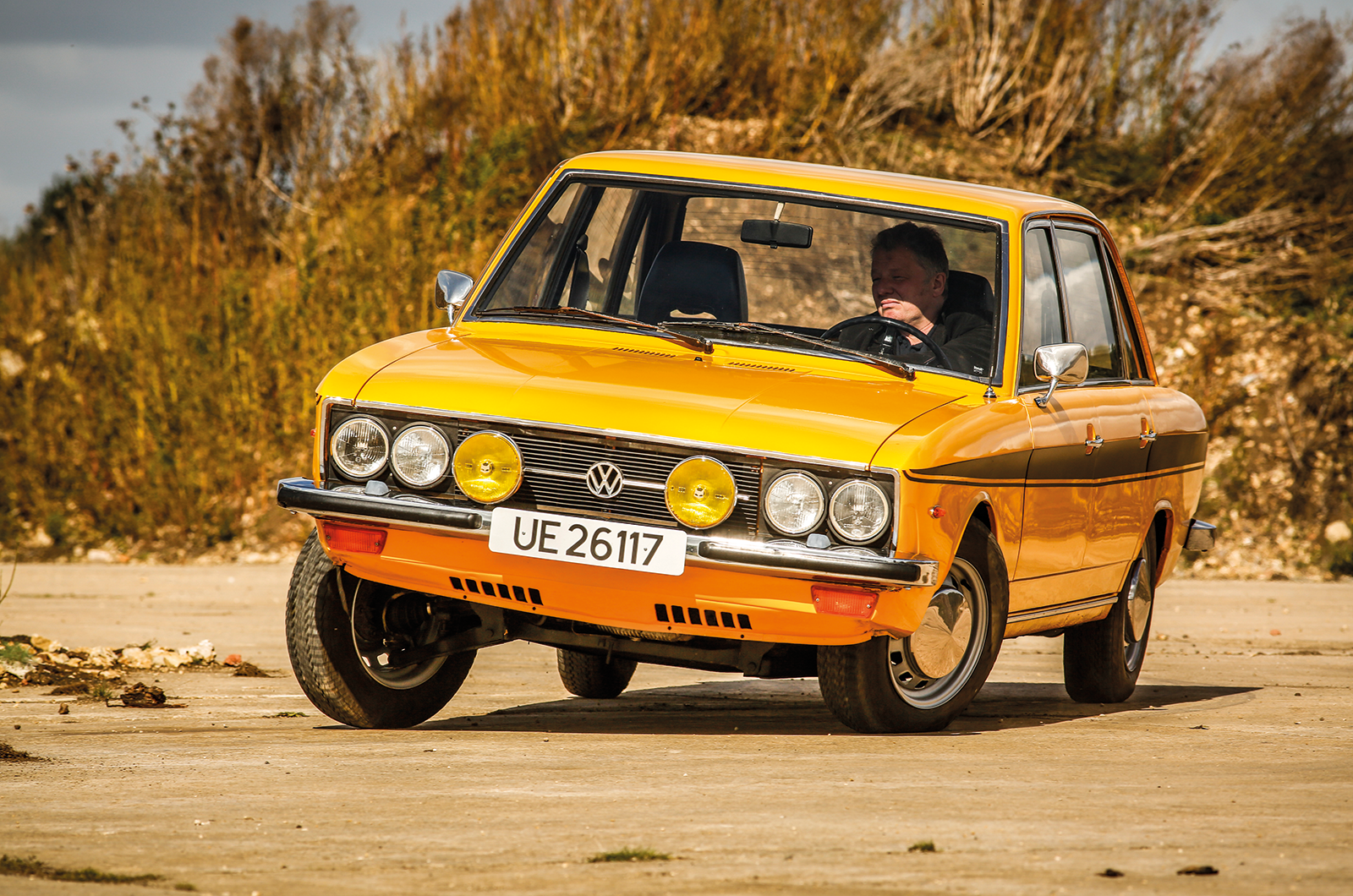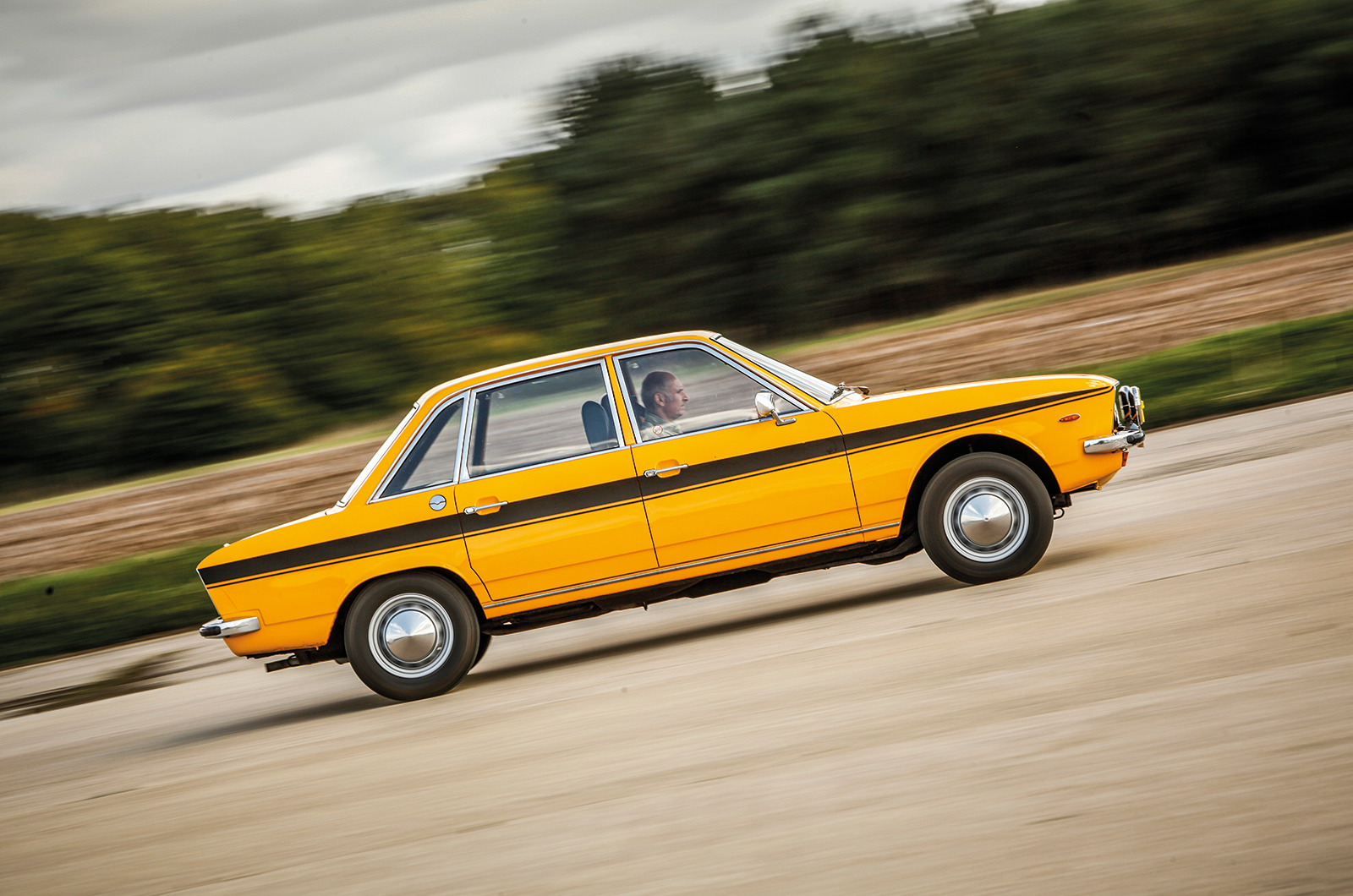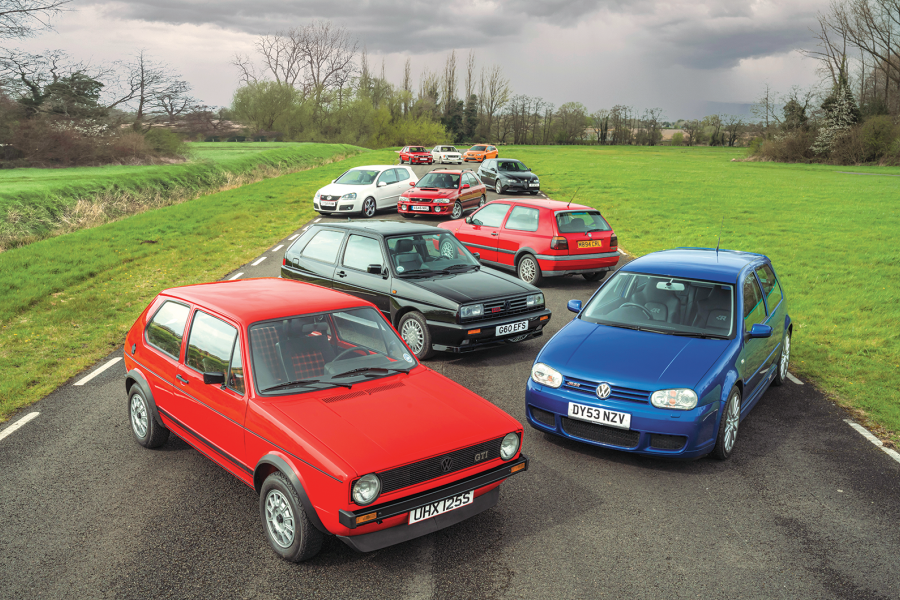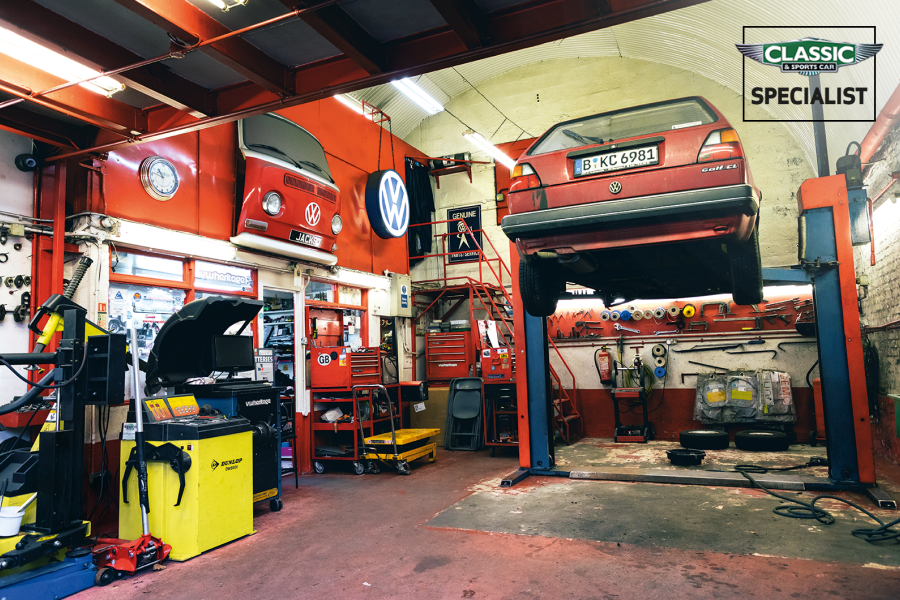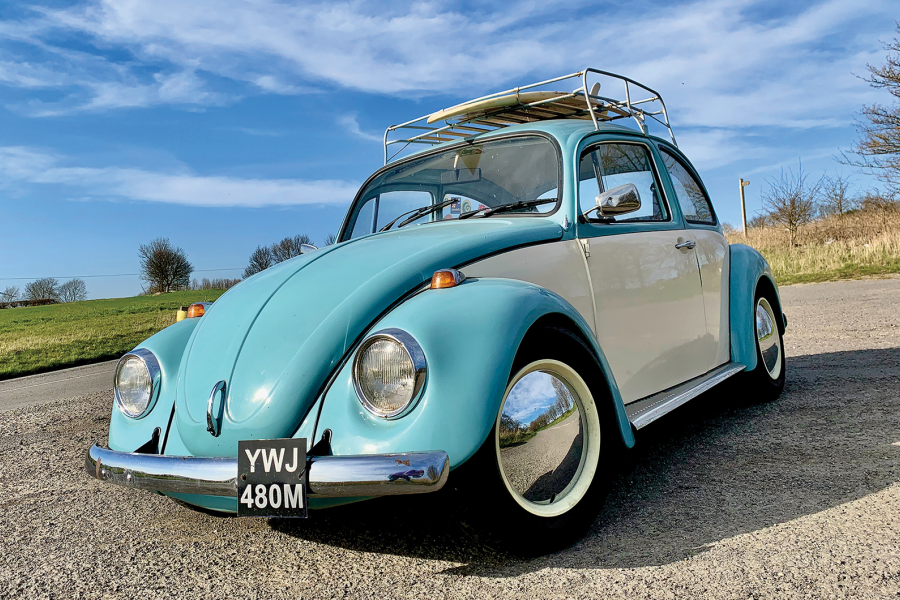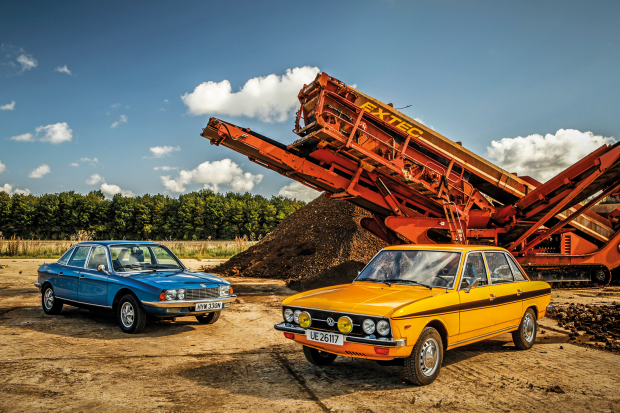
Some cars do their best to elude you and one such in my case has been the Volkswagen K70.
It is not an exciting car – or even a particularly desirable one – but something about its story has always niggled at me. How could an all-new German saloon that obviously came from a good family, looked impressively clean and modern by the standards of 1970 – and clearly aspired to be more than just another cynical tin box – have such a conspicuously short, four-year career and 211,000 production run?
Historical significance is not a guarantee of success or excellence, of course – the K70 was the first front-engine, front-drive, water-cooled Volkswagen – but, even so, its subsequent descent into obscurity as a car that is rarely talked of or written about has always seemed odd to me.
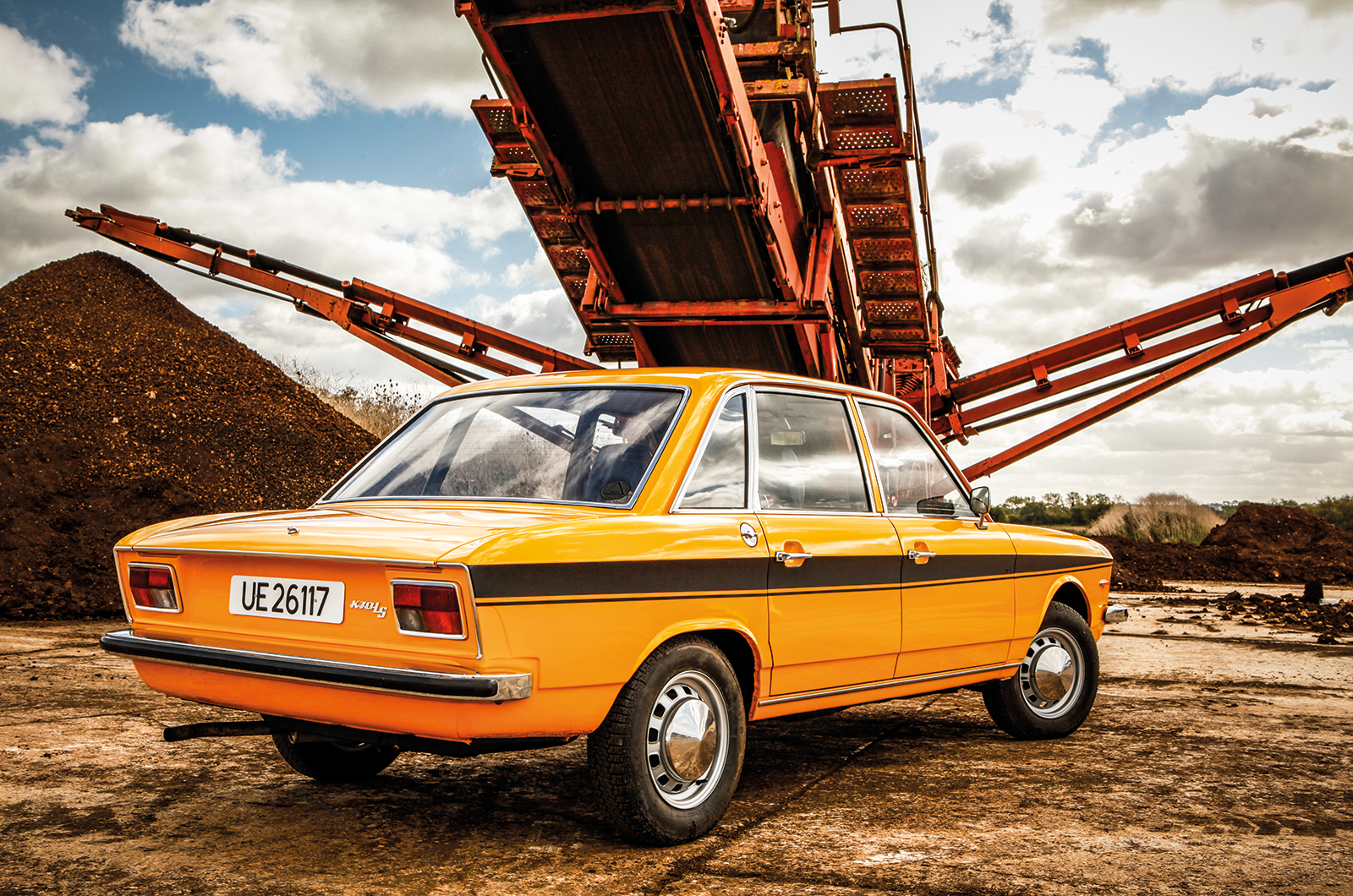
K70 has neat, square-rigger lines with factory matt-black flash
Superficially, the K70 appeared to have all the ingredients for success, not least a good engineering pedigree.
It was common knowledge that it had been conceived as a simplified, piston-engined companion to the masterful-but-flawed NSU Ro80, although fewer people seemed to know that ‘K’ stood for Kolben (or piston in German) and 70 was its intended bhp.

